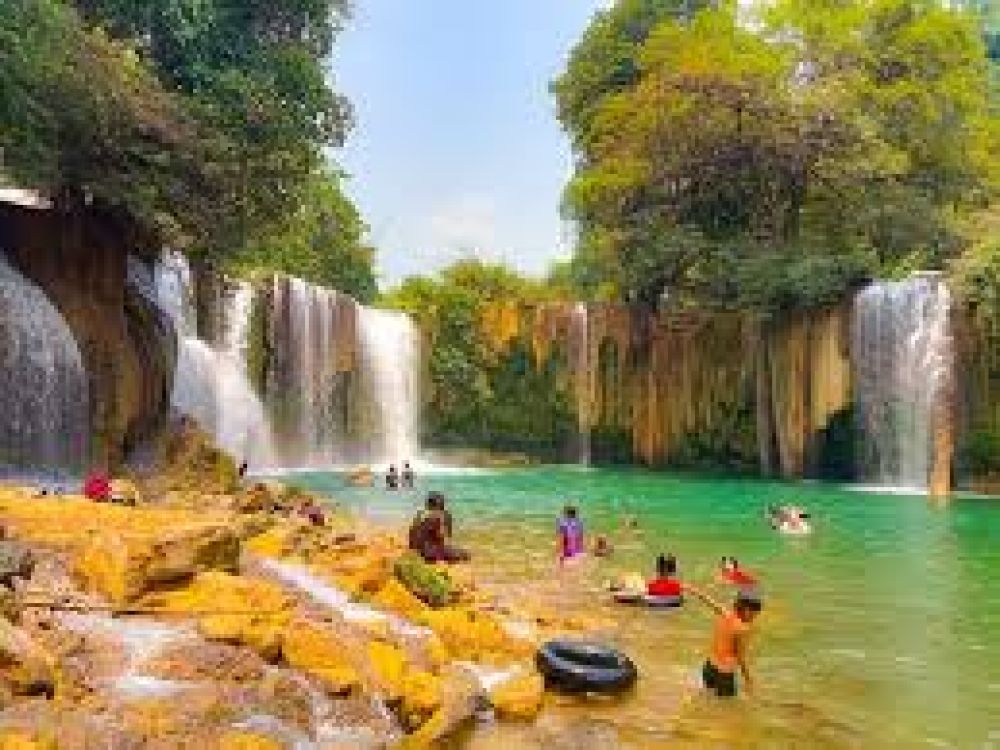

Located in the picturesque region of Hpa-An in Myanmar, the Kyone Htaw Waterfall has long captivated both locals and tourists with its natural beauty. The history of tourism in this area can be traced back to when Myanmar (formerly known as Burma) started opening up to international visitors in the late 20th century. Hpa-An, the capital of Kayin State, is nestled amongst limestone cliffs and is revered for its stunning landscapes and cultural significance.
Initially, Myanmar was not a well-known tourist destination due to its political isolation. However, as the country embarked on a path to democracy, travelers began to discover its hidden gems, including Hpa-An's Kyone Htaw Waterfall. This site was primarily frequented by intrepid travelers and adventurers looking to explore off-the-beaten-path locations.
With the advent of the 21st century, Myanmar saw an increase in tourism. The Kyone Htaw Waterfall, along with other attractions in Hpa-An, began to receive more visitors. The unspoiled nature of the waterfall and its surroundings appealed to those seeking serenity and the natural beauty of Southeast Asia.
In response to the growing interest, local tourism development started to take pace. Basic amenities and infrastructure were established, including pathways to the waterfall, local guides, and small-scale accommodations for tourists. Despite these developments, the area maintained its tranquil and pristine atmosphere, a testament to sustainable tourism practices adhered to by local communities.
In recent years, Hpa-An and Kyone Htaw Waterfall have seen a consistent uptick in tourism. Eco-tourism has become particularly popular, with visitors looking to enjoy the natural environment responsibly. The waterfall area now offers opportunities for hiking, swimming, and photography, attracting both nature lovers and those interested in outdoor activities.
Moreover, cultural tourism has also taken root, with visitors eager to learn about the unique customs and traditions of the Kayin people. Local festivals and culinary experiences add to the draw, making Kyone Htaw Waterfall not just a natural attraction but also a cultural destination.
Despite the growth in tourism, global events such as political changes within Myanmar and the COVID-19 pandemic have affected visitor numbers in recent times. The tourism industry has faced challenges, encouraging a focus on sustainable and resilient tourism strategies moving forward.
As travel norms begin to normalize, Kyone Htaw Waterfall is likely to regain its position as a sought-after destination for those visiting Myanmar. With its remarkable scenery and potential for immersive cultural experiences, it remains a jewel in Hpa-An's tourism crown.
The future of tourism at Kyone Htaw Waterfall seems to be geared towards sustainability and community involvement. There is a significant emphasis on ensuring that the natural and cultural heritage is preserved while providing economic benefits to the local population. As Myanmar continues to develop its tourism industries, destinations like Kyone Htaw Waterfall will become increasingly important to the country's tourism portfolio.